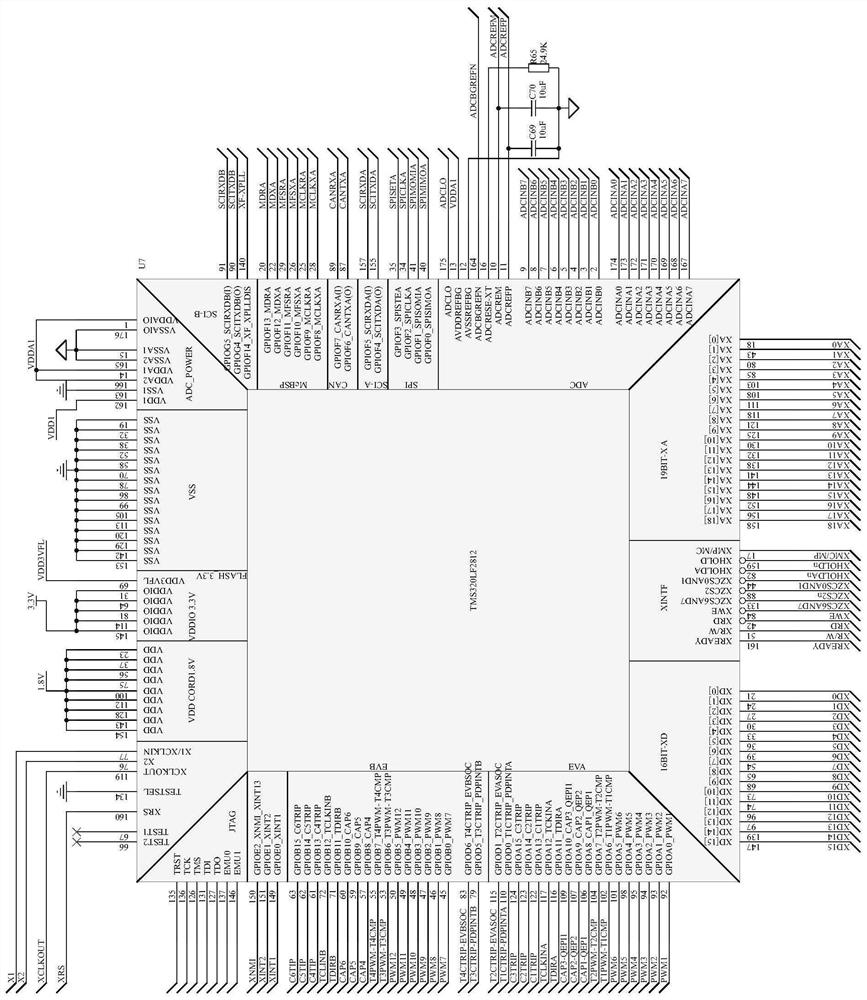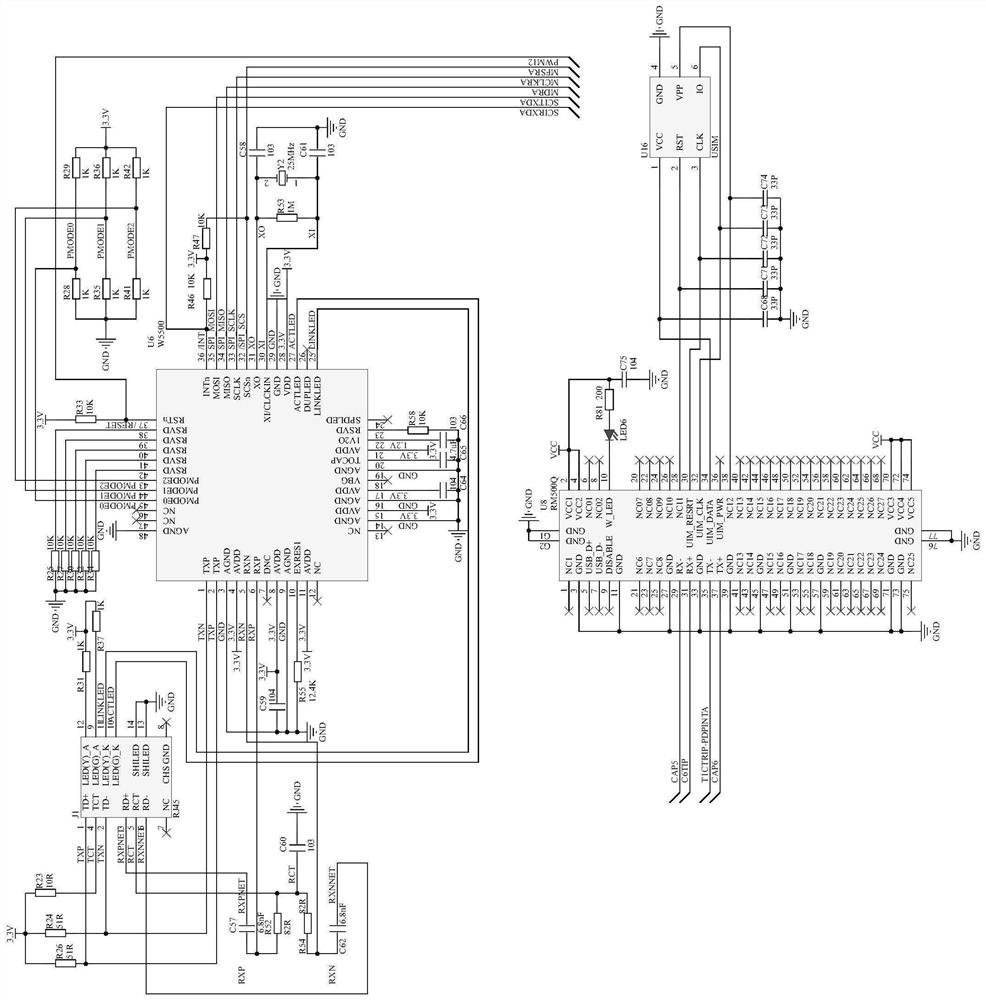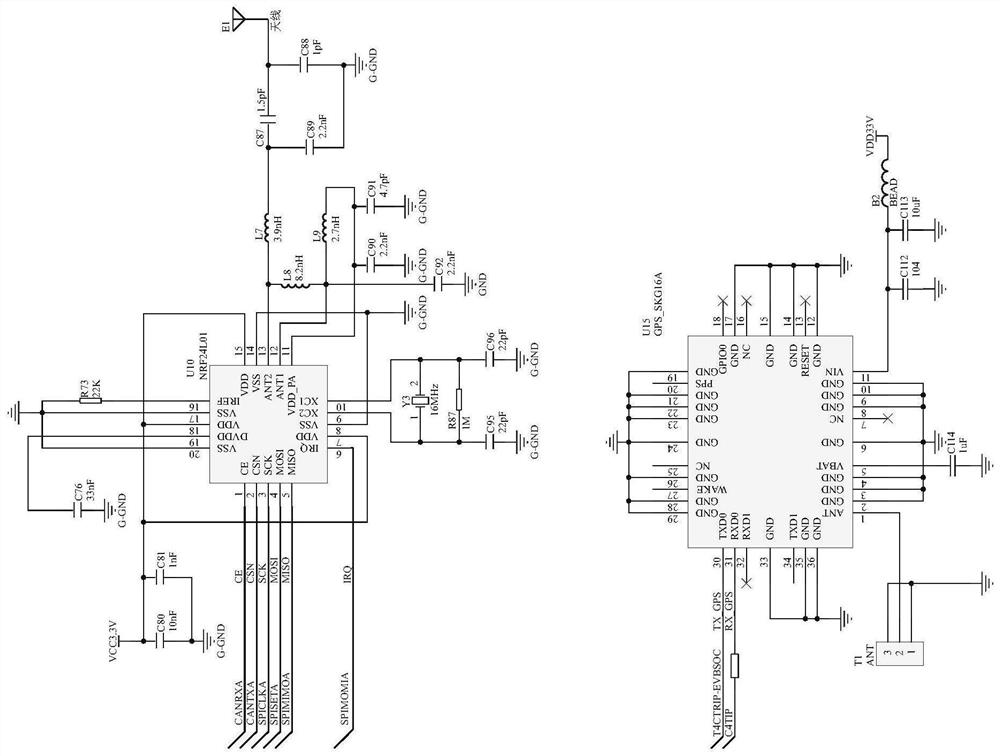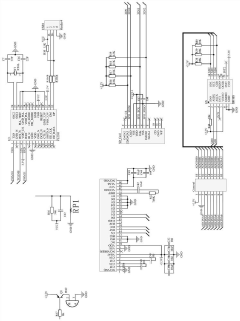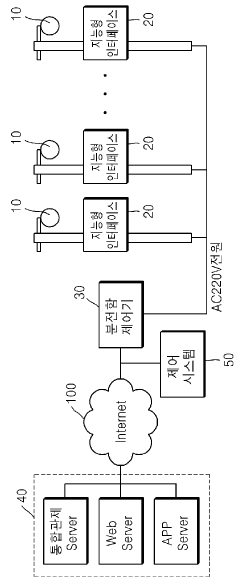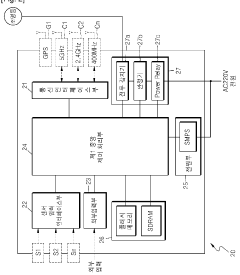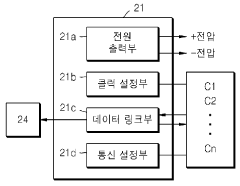How 5G UC Enhances the Efficiency of Smart City Lighting Systems
JUL 18, 20259 MIN READ
Generate Your Research Report Instantly with AI Agent
Patsnap Eureka helps you evaluate technical feasibility & market potential.
5G UC Smart City Lighting Background and Objectives
The evolution of smart city technologies has been a significant focus in urban development over the past decade. Among these advancements, smart lighting systems have emerged as a crucial component in creating more efficient, sustainable, and livable urban environments. The integration of 5G Ultra-Capacity (UC) technology with smart city lighting systems represents a pivotal step forward in this domain, promising to revolutionize the way cities manage their lighting infrastructure.
Smart city lighting systems have traditionally relied on various communication technologies, including Wi-Fi, Bluetooth, and earlier generations of cellular networks. However, these solutions often faced limitations in terms of coverage, latency, and data capacity. The advent of 5G UC technology offers a transformative solution to these challenges, providing ultra-fast, low-latency, and high-capacity connectivity that can significantly enhance the efficiency and capabilities of smart lighting systems.
The primary objective of integrating 5G UC with smart city lighting is to create a more responsive, adaptive, and energy-efficient urban lighting infrastructure. This integration aims to enable real-time monitoring and control of lighting systems across entire cities, allowing for dynamic adjustments based on various factors such as traffic flow, weather conditions, and public events. By leveraging the enhanced capabilities of 5G UC, cities can potentially achieve substantial energy savings, reduce light pollution, and improve overall urban safety and aesthetics.
Furthermore, the implementation of 5G UC in smart lighting systems opens up new possibilities for data collection and analysis. The high-bandwidth and low-latency characteristics of 5G UC enable the transmission of large volumes of data from various sensors integrated into lighting fixtures. This data can provide valuable insights into urban patterns, environmental conditions, and infrastructure performance, supporting data-driven decision-making in city management.
As we explore the potential of 5G UC in smart city lighting, it is essential to consider the broader context of smart city development. The lighting infrastructure, enhanced by 5G UC, can serve as a backbone for other smart city applications, such as traffic management, environmental monitoring, and public safety systems. This convergence of technologies has the potential to create a more interconnected and intelligent urban ecosystem, paving the way for more efficient resource utilization and improved quality of life for city residents.
In conclusion, the integration of 5G UC technology with smart city lighting systems represents a significant technological leap forward. It offers the promise of more efficient, responsive, and intelligent urban lighting solutions, while also contributing to the broader goals of smart city initiatives. As we delve deeper into this topic, we will explore the specific ways in which 5G UC enhances the efficiency of smart city lighting systems, the challenges involved in implementation, and the potential future developments in this exciting field.
Smart city lighting systems have traditionally relied on various communication technologies, including Wi-Fi, Bluetooth, and earlier generations of cellular networks. However, these solutions often faced limitations in terms of coverage, latency, and data capacity. The advent of 5G UC technology offers a transformative solution to these challenges, providing ultra-fast, low-latency, and high-capacity connectivity that can significantly enhance the efficiency and capabilities of smart lighting systems.
The primary objective of integrating 5G UC with smart city lighting is to create a more responsive, adaptive, and energy-efficient urban lighting infrastructure. This integration aims to enable real-time monitoring and control of lighting systems across entire cities, allowing for dynamic adjustments based on various factors such as traffic flow, weather conditions, and public events. By leveraging the enhanced capabilities of 5G UC, cities can potentially achieve substantial energy savings, reduce light pollution, and improve overall urban safety and aesthetics.
Furthermore, the implementation of 5G UC in smart lighting systems opens up new possibilities for data collection and analysis. The high-bandwidth and low-latency characteristics of 5G UC enable the transmission of large volumes of data from various sensors integrated into lighting fixtures. This data can provide valuable insights into urban patterns, environmental conditions, and infrastructure performance, supporting data-driven decision-making in city management.
As we explore the potential of 5G UC in smart city lighting, it is essential to consider the broader context of smart city development. The lighting infrastructure, enhanced by 5G UC, can serve as a backbone for other smart city applications, such as traffic management, environmental monitoring, and public safety systems. This convergence of technologies has the potential to create a more interconnected and intelligent urban ecosystem, paving the way for more efficient resource utilization and improved quality of life for city residents.
In conclusion, the integration of 5G UC technology with smart city lighting systems represents a significant technological leap forward. It offers the promise of more efficient, responsive, and intelligent urban lighting solutions, while also contributing to the broader goals of smart city initiatives. As we delve deeper into this topic, we will explore the specific ways in which 5G UC enhances the efficiency of smart city lighting systems, the challenges involved in implementation, and the potential future developments in this exciting field.
Smart City Lighting Market Analysis
The smart city lighting market is experiencing significant growth, driven by the increasing urbanization and the need for energy-efficient and sustainable urban infrastructure. As cities worldwide strive to become smarter and more connected, the demand for intelligent lighting solutions continues to rise. The market for smart city lighting systems is expected to expand rapidly in the coming years, with a compound annual growth rate (CAGR) projected to be in the double digits.
One of the key factors fueling this market growth is the potential for substantial energy savings and reduced operational costs. Smart lighting systems, equipped with sensors and advanced control mechanisms, can automatically adjust illumination levels based on ambient light conditions, occupancy, and time of day. This results in significant reductions in energy consumption, sometimes up to 50% or more compared to traditional lighting systems.
The integration of 5G UC (Ultra-Reliable Low-Latency Communication) technology is poised to revolutionize the smart city lighting market. 5G UC enables real-time communication and control of lighting infrastructure, allowing for more responsive and adaptive lighting solutions. This enhanced connectivity facilitates the implementation of advanced features such as predictive maintenance, dynamic lighting scenarios, and seamless integration with other smart city systems.
Market segmentation reveals several key application areas for smart city lighting. Street lighting remains the largest segment, as cities prioritize the upgrade of their extensive street lighting networks to improve energy efficiency and public safety. Other growing segments include park and recreational area lighting, architectural lighting for landmarks and buildings, and smart parking lot illumination.
Geographically, North America and Europe currently lead the smart city lighting market, with well-established urban infrastructure and strong government initiatives supporting smart city projects. However, the Asia-Pacific region is expected to witness the fastest growth, driven by rapid urbanization, increasing investments in smart city initiatives, and the adoption of advanced technologies in countries like China, India, and South Korea.
The market landscape is characterized by a mix of established lighting manufacturers, technology giants, and innovative startups. Key players are focusing on developing comprehensive smart lighting platforms that offer not only energy-efficient LED luminaires but also advanced control systems, data analytics capabilities, and integration with other smart city services.
As the smart city lighting market continues to evolve, several trends are shaping its future. These include the increasing adoption of IoT-enabled lighting solutions, the integration of artificial intelligence for predictive lighting control, and the use of lighting infrastructure as a platform for additional smart city services such as environmental monitoring, traffic management, and public Wi-Fi.
One of the key factors fueling this market growth is the potential for substantial energy savings and reduced operational costs. Smart lighting systems, equipped with sensors and advanced control mechanisms, can automatically adjust illumination levels based on ambient light conditions, occupancy, and time of day. This results in significant reductions in energy consumption, sometimes up to 50% or more compared to traditional lighting systems.
The integration of 5G UC (Ultra-Reliable Low-Latency Communication) technology is poised to revolutionize the smart city lighting market. 5G UC enables real-time communication and control of lighting infrastructure, allowing for more responsive and adaptive lighting solutions. This enhanced connectivity facilitates the implementation of advanced features such as predictive maintenance, dynamic lighting scenarios, and seamless integration with other smart city systems.
Market segmentation reveals several key application areas for smart city lighting. Street lighting remains the largest segment, as cities prioritize the upgrade of their extensive street lighting networks to improve energy efficiency and public safety. Other growing segments include park and recreational area lighting, architectural lighting for landmarks and buildings, and smart parking lot illumination.
Geographically, North America and Europe currently lead the smart city lighting market, with well-established urban infrastructure and strong government initiatives supporting smart city projects. However, the Asia-Pacific region is expected to witness the fastest growth, driven by rapid urbanization, increasing investments in smart city initiatives, and the adoption of advanced technologies in countries like China, India, and South Korea.
The market landscape is characterized by a mix of established lighting manufacturers, technology giants, and innovative startups. Key players are focusing on developing comprehensive smart lighting platforms that offer not only energy-efficient LED luminaires but also advanced control systems, data analytics capabilities, and integration with other smart city services.
As the smart city lighting market continues to evolve, several trends are shaping its future. These include the increasing adoption of IoT-enabled lighting solutions, the integration of artificial intelligence for predictive lighting control, and the use of lighting infrastructure as a platform for additional smart city services such as environmental monitoring, traffic management, and public Wi-Fi.
5G UC Technology in Smart Lighting: Current Status and Challenges
The integration of 5G UC (Ultra-Reliable and Low-Latency Communication) technology into smart city lighting systems represents a significant advancement in urban infrastructure management. However, this integration also presents several challenges that need to be addressed for optimal implementation and performance.
Currently, 5G UC technology is being deployed in various smart city projects worldwide, with lighting systems being one of the key areas of application. The ultra-low latency and high reliability of 5G UC enable real-time control and monitoring of street lights, leading to improved energy efficiency and enhanced public safety. Many cities have begun pilot projects to test the feasibility and benefits of this technology in their lighting infrastructure.
One of the primary challenges in implementing 5G UC for smart lighting systems is the need for extensive infrastructure upgrades. Existing lighting networks often lack the necessary communication capabilities to support 5G UC technology. This requires significant investment in new hardware, including 5G-enabled light controllers and sensors, as well as the installation of small cell networks to ensure comprehensive coverage.
Another significant challenge is the complexity of integrating 5G UC technology with existing smart city systems. Many cities already have some form of smart lighting control in place, often using different communication protocols. Ensuring seamless interoperability between these legacy systems and new 5G UC-enabled components can be technically challenging and resource-intensive.
Data security and privacy concerns also pose substantial challenges. With 5G UC enabling the collection and transmission of vast amounts of data from smart lighting systems, there is an increased risk of cyber attacks and data breaches. Implementing robust security measures and encryption protocols is crucial to protect sensitive information and maintain public trust.
The power consumption of 5G UC-enabled devices is another area of concern. While smart lighting systems aim to reduce energy usage, the additional power required to operate 5G communication modules in each light fixture could potentially offset some of these savings. Developing energy-efficient 5G UC modules specifically designed for smart lighting applications is an ongoing challenge for manufacturers.
Lastly, the regulatory landscape surrounding 5G UC deployment in smart city applications is still evolving. Many cities face uncertainties regarding spectrum allocation, deployment regulations, and compliance standards for 5G UC in public infrastructure. This regulatory ambiguity can slow down adoption and implementation of the technology in smart lighting systems.
Despite these challenges, the potential benefits of 5G UC in smart lighting systems continue to drive innovation and research in this field. As technology advances and more cities gain experience with 5G UC deployments, many of these challenges are expected to be addressed, paving the way for more efficient and responsive urban lighting infrastructure.
Currently, 5G UC technology is being deployed in various smart city projects worldwide, with lighting systems being one of the key areas of application. The ultra-low latency and high reliability of 5G UC enable real-time control and monitoring of street lights, leading to improved energy efficiency and enhanced public safety. Many cities have begun pilot projects to test the feasibility and benefits of this technology in their lighting infrastructure.
One of the primary challenges in implementing 5G UC for smart lighting systems is the need for extensive infrastructure upgrades. Existing lighting networks often lack the necessary communication capabilities to support 5G UC technology. This requires significant investment in new hardware, including 5G-enabled light controllers and sensors, as well as the installation of small cell networks to ensure comprehensive coverage.
Another significant challenge is the complexity of integrating 5G UC technology with existing smart city systems. Many cities already have some form of smart lighting control in place, often using different communication protocols. Ensuring seamless interoperability between these legacy systems and new 5G UC-enabled components can be technically challenging and resource-intensive.
Data security and privacy concerns also pose substantial challenges. With 5G UC enabling the collection and transmission of vast amounts of data from smart lighting systems, there is an increased risk of cyber attacks and data breaches. Implementing robust security measures and encryption protocols is crucial to protect sensitive information and maintain public trust.
The power consumption of 5G UC-enabled devices is another area of concern. While smart lighting systems aim to reduce energy usage, the additional power required to operate 5G communication modules in each light fixture could potentially offset some of these savings. Developing energy-efficient 5G UC modules specifically designed for smart lighting applications is an ongoing challenge for manufacturers.
Lastly, the regulatory landscape surrounding 5G UC deployment in smart city applications is still evolving. Many cities face uncertainties regarding spectrum allocation, deployment regulations, and compliance standards for 5G UC in public infrastructure. This regulatory ambiguity can slow down adoption and implementation of the technology in smart lighting systems.
Despite these challenges, the potential benefits of 5G UC in smart lighting systems continue to drive innovation and research in this field. As technology advances and more cities gain experience with 5G UC deployments, many of these challenges are expected to be addressed, paving the way for more efficient and responsive urban lighting infrastructure.
Existing 5G UC Solutions for Smart City Lighting
01 Network resource allocation and optimization
5G UC efficiency can be improved through intelligent allocation and optimization of network resources. This includes dynamic spectrum management, adaptive beamforming, and load balancing techniques to maximize capacity and minimize interference. Advanced algorithms are used to optimize resource utilization based on real-time network conditions and user demands.- Network resource allocation and optimization: 5G UC efficiency can be improved through intelligent allocation and optimization of network resources. This includes dynamic spectrum sharing, adaptive beamforming, and advanced scheduling algorithms to maximize capacity and minimize latency. These techniques allow for more efficient use of available bandwidth and improved overall network performance.
- Advanced antenna technologies: Implementation of advanced antenna technologies such as Massive MIMO (Multiple-Input Multiple-Output) and beamforming can significantly enhance 5G UC efficiency. These technologies enable more focused and directional signal transmission, resulting in improved coverage, capacity, and energy efficiency in ultra-capacity networks.
- Edge computing and network slicing: Leveraging edge computing and network slicing techniques can optimize 5G UC efficiency. By bringing computing resources closer to the end-user and creating dedicated virtual networks for specific applications, latency is reduced, and network resources are utilized more effectively, leading to improved overall performance and user experience.
- AI and machine learning integration: Incorporating artificial intelligence and machine learning algorithms into 5G UC networks can enhance efficiency through predictive analytics, automated network optimization, and intelligent traffic management. These technologies enable networks to adapt in real-time to changing conditions and user demands, maximizing resource utilization and performance.
- Energy-efficient hardware and protocols: Developing and implementing energy-efficient hardware components and communication protocols can improve the overall efficiency of 5G UC networks. This includes low-power radio frequency (RF) components, energy-aware routing algorithms, and sleep mode optimization for network elements, resulting in reduced power consumption without compromising performance.
02 Advanced antenna technologies
Implementation of advanced antenna technologies such as Massive MIMO (Multiple-Input Multiple-Output) and beamforming significantly enhances 5G UC efficiency. These technologies allow for more focused and directional signal transmission, improving signal quality, reducing interference, and increasing overall network capacity.Expand Specific Solutions03 Edge computing integration
Integrating edge computing with 5G UC networks can greatly improve efficiency by reducing latency and offloading processing tasks from the core network. This approach enables faster data processing, real-time analytics, and more efficient use of network resources, particularly beneficial for IoT and mission-critical applications.Expand Specific Solutions04 Network slicing and virtualization
Network slicing and virtualization techniques allow for the creation of multiple virtual networks on a single physical infrastructure. This enables tailored service delivery for different use cases, optimizing resource allocation and improving overall network efficiency in 5G UC deployments.Expand Specific Solutions05 AI and machine learning for network optimization
Artificial intelligence and machine learning algorithms are employed to continuously analyze network performance, predict traffic patterns, and autonomously optimize 5G UC network configurations. This approach enables proactive network management, enhancing efficiency, and adapting to changing user demands and network conditions in real-time.Expand Specific Solutions
Key Players in 5G UC Smart Lighting Industry
The 5G UC (Ultra-Capacity) smart city lighting system market is in its early growth stage, with significant potential for expansion as cities worldwide seek to modernize their infrastructure. The market size is projected to increase rapidly, driven by the growing adoption of smart city initiatives and the need for energy-efficient lighting solutions. Technologically, the field is evolving quickly, with companies like Samsung Electronics, Qualcomm, and IBM leading innovation. These firms are developing advanced 5G-enabled lighting systems that offer improved connectivity, energy efficiency, and data analytics capabilities. Other players such as NTT Docomo and LG Electronics are also making strides in this space, contributing to the competitive landscape and driving technological advancements.
QUALCOMM, Inc.
Technical Solution: Qualcomm's 5G UC (Ultra-Capacity) technology enhances smart city lighting systems through its advanced chipset solutions. The company's 5G modems and RF systems enable ultra-low latency and high-bandwidth connectivity, crucial for real-time control of lighting infrastructure. Qualcomm's AI-enabled edge computing platforms process data locally, reducing network load and improving response times. Their solution integrates with existing lighting control systems, allowing for granular control of individual lights based on real-time data from environmental sensors[1][3]. The system supports dynamic lighting adjustments, energy optimization, and predictive maintenance, significantly improving the efficiency of smart city lighting networks[5].
Strengths: Industry-leading 5G technology, extensive IoT ecosystem, strong AI and edge computing capabilities. Weaknesses: Dependency on chip manufacturing partners, potential for high implementation costs in large-scale deployments.
NTT Docomo, Inc.
Technical Solution: NTT Docomo's approach to enhancing smart city lighting systems with 5G UC focuses on creating a comprehensive network infrastructure. Their solution utilizes high-density small cell deployments to ensure consistent coverage across urban areas. Docomo's 5G network slicing technology allows dedicated virtual networks for lighting control, ensuring reliable performance even during peak network loads. The company's IoT platform integrates with various sensors and actuators, enabling real-time monitoring and control of lighting systems. Docomo's solution incorporates AI-driven predictive analytics to optimize energy consumption and maintenance schedules[2]. Their system also supports vehicle-to-infrastructure (V2I) communication, allowing smart streetlights to interact with autonomous vehicles for enhanced safety and traffic management[4].
Strengths: Extensive experience in network infrastructure, strong presence in Asian markets, advanced network slicing capabilities. Weaknesses: Limited global presence compared to some competitors, potential challenges in adapting to diverse international regulations.
Core Innovations in 5G UC Smart Lighting Systems
5G intelligent street lamp control system for smart city
PatentActiveCN112512182A
Innovation
- Using 5G communication technology and Internet of Things technology, through Wi-Fi module, 5G communication module, GPS module, Bluetooth module and NB-IOT module, combined with display circuit, sensor circuit and alarm circuit, real-time monitoring of street lights and rapid fault location are achieved .
U-city light control system having an intelligent interface module
PatentWO2011074821A2
Innovation
- A U-City lighting control system with an intelligent interface module that allows for expandable communication solutions based on the environment, incorporating a distribution box controller with selective connection of communication devices and GPS receivers, enabling remote control management and integration of traffic and social infrastructure services.
Energy Efficiency and Sustainability Considerations
The integration of 5G UC technology into smart city lighting systems presents significant opportunities for enhancing energy efficiency and promoting sustainability. By leveraging the ultra-reliable low-latency communication (URLLC) capabilities of 5G UC, smart lighting systems can achieve more precise control and real-time responsiveness, leading to substantial energy savings.
One of the primary advantages of 5G UC in smart lighting is its ability to support a massive number of connected devices. This enables the deployment of a dense network of sensors and actuators throughout the urban environment, allowing for granular control of individual light fixtures. With this level of control, lighting can be dynamically adjusted based on real-time data, such as pedestrian and vehicle traffic, weather conditions, and ambient light levels.
The low latency of 5G UC ensures that these adjustments can be made instantaneously, maximizing energy savings without compromising safety or user experience. For example, streetlights can dim or brighten in milliseconds as vehicles or pedestrians approach, ensuring optimal illumination while minimizing unnecessary energy consumption during periods of low activity.
Furthermore, the high bandwidth of 5G UC facilitates the collection and analysis of vast amounts of data from the lighting network. This data can be used to optimize energy usage patterns over time, identifying trends and anomalies that may lead to further efficiency improvements. Advanced analytics and machine learning algorithms can be applied to this data to predict lighting needs and proactively adjust system parameters for optimal performance.
The reliability of 5G UC also contributes to sustainability by reducing the need for physical maintenance visits. Remote monitoring and diagnostics can identify potential issues before they lead to failures, allowing for predictive maintenance and minimizing the carbon footprint associated with service operations. Additionally, over-the-air updates can be seamlessly deployed to lighting control systems, ensuring that they always operate with the latest energy-efficient algorithms and protocols.
From a sustainability perspective, the energy savings achieved through 5G UC-enabled smart lighting systems can significantly reduce a city's carbon footprint. By minimizing unnecessary illumination and optimizing energy consumption, these systems can contribute to broader environmental goals and help cities meet their sustainability targets. The reduced energy demand also translates to lower operational costs for municipalities, freeing up resources for other sustainable initiatives.
Moreover, the flexibility of 5G UC allows for the integration of renewable energy sources into the smart lighting infrastructure. Solar-powered streetlights, for instance, can be more effectively managed, with excess energy being redistributed across the network or stored for later use. This integration of renewable energy further enhances the sustainability profile of smart city lighting systems, moving towards a more circular and resilient urban energy ecosystem.
One of the primary advantages of 5G UC in smart lighting is its ability to support a massive number of connected devices. This enables the deployment of a dense network of sensors and actuators throughout the urban environment, allowing for granular control of individual light fixtures. With this level of control, lighting can be dynamically adjusted based on real-time data, such as pedestrian and vehicle traffic, weather conditions, and ambient light levels.
The low latency of 5G UC ensures that these adjustments can be made instantaneously, maximizing energy savings without compromising safety or user experience. For example, streetlights can dim or brighten in milliseconds as vehicles or pedestrians approach, ensuring optimal illumination while minimizing unnecessary energy consumption during periods of low activity.
Furthermore, the high bandwidth of 5G UC facilitates the collection and analysis of vast amounts of data from the lighting network. This data can be used to optimize energy usage patterns over time, identifying trends and anomalies that may lead to further efficiency improvements. Advanced analytics and machine learning algorithms can be applied to this data to predict lighting needs and proactively adjust system parameters for optimal performance.
The reliability of 5G UC also contributes to sustainability by reducing the need for physical maintenance visits. Remote monitoring and diagnostics can identify potential issues before they lead to failures, allowing for predictive maintenance and minimizing the carbon footprint associated with service operations. Additionally, over-the-air updates can be seamlessly deployed to lighting control systems, ensuring that they always operate with the latest energy-efficient algorithms and protocols.
From a sustainability perspective, the energy savings achieved through 5G UC-enabled smart lighting systems can significantly reduce a city's carbon footprint. By minimizing unnecessary illumination and optimizing energy consumption, these systems can contribute to broader environmental goals and help cities meet their sustainability targets. The reduced energy demand also translates to lower operational costs for municipalities, freeing up resources for other sustainable initiatives.
Moreover, the flexibility of 5G UC allows for the integration of renewable energy sources into the smart lighting infrastructure. Solar-powered streetlights, for instance, can be more effectively managed, with excess energy being redistributed across the network or stored for later use. This integration of renewable energy further enhances the sustainability profile of smart city lighting systems, moving towards a more circular and resilient urban energy ecosystem.
Cybersecurity in 5G UC Smart Lighting Networks
The integration of 5G UC technology in smart city lighting systems introduces new cybersecurity challenges that must be addressed to ensure the safety and reliability of these critical infrastructure networks. As these systems become more interconnected and data-driven, they also become more vulnerable to cyber threats and attacks.
One of the primary concerns in 5G UC smart lighting networks is the potential for unauthorized access and data breaches. With the increased connectivity and data transmission capabilities of 5G, malicious actors may attempt to exploit vulnerabilities in the network to gain access to sensitive information or disrupt lighting operations. This could lead to privacy violations, system malfunctions, or even citywide blackouts.
To mitigate these risks, robust encryption protocols and authentication mechanisms must be implemented throughout the smart lighting network. This includes securing communication channels between individual lighting fixtures, control centers, and other connected devices. Advanced encryption algorithms and secure key management systems are essential to protect data in transit and at rest.
Another critical aspect of cybersecurity in 5G UC smart lighting networks is the need for continuous monitoring and threat detection. Real-time analysis of network traffic and behavior patterns can help identify potential security breaches or anomalies. Implementing intrusion detection and prevention systems (IDS/IPS) specifically tailored for IoT and 5G environments is crucial for maintaining network integrity.
Firmware and software updates pose another security challenge in smart lighting systems. Regular updates are necessary to patch vulnerabilities and improve system performance. However, these updates can also be a potential attack vector if not properly secured. Implementing secure over-the-air (OTA) update mechanisms with strong authentication and integrity checks is essential to prevent malicious code injection or unauthorized modifications.
Physical security of smart lighting infrastructure is also a concern. Tamper-resistant hardware designs and secure physical access controls for lighting fixtures and network components are necessary to prevent physical attacks or unauthorized access to the system.
As smart lighting networks become more complex and interconnected with other smart city systems, the attack surface expands. Implementing network segmentation and micro-segmentation techniques can help isolate critical components and limit the potential impact of a security breach. This approach also enables more granular access control and monitoring of network traffic between different segments of the smart lighting system.
One of the primary concerns in 5G UC smart lighting networks is the potential for unauthorized access and data breaches. With the increased connectivity and data transmission capabilities of 5G, malicious actors may attempt to exploit vulnerabilities in the network to gain access to sensitive information or disrupt lighting operations. This could lead to privacy violations, system malfunctions, or even citywide blackouts.
To mitigate these risks, robust encryption protocols and authentication mechanisms must be implemented throughout the smart lighting network. This includes securing communication channels between individual lighting fixtures, control centers, and other connected devices. Advanced encryption algorithms and secure key management systems are essential to protect data in transit and at rest.
Another critical aspect of cybersecurity in 5G UC smart lighting networks is the need for continuous monitoring and threat detection. Real-time analysis of network traffic and behavior patterns can help identify potential security breaches or anomalies. Implementing intrusion detection and prevention systems (IDS/IPS) specifically tailored for IoT and 5G environments is crucial for maintaining network integrity.
Firmware and software updates pose another security challenge in smart lighting systems. Regular updates are necessary to patch vulnerabilities and improve system performance. However, these updates can also be a potential attack vector if not properly secured. Implementing secure over-the-air (OTA) update mechanisms with strong authentication and integrity checks is essential to prevent malicious code injection or unauthorized modifications.
Physical security of smart lighting infrastructure is also a concern. Tamper-resistant hardware designs and secure physical access controls for lighting fixtures and network components are necessary to prevent physical attacks or unauthorized access to the system.
As smart lighting networks become more complex and interconnected with other smart city systems, the attack surface expands. Implementing network segmentation and micro-segmentation techniques can help isolate critical components and limit the potential impact of a security breach. This approach also enables more granular access control and monitoring of network traffic between different segments of the smart lighting system.
Unlock deeper insights with Patsnap Eureka Quick Research — get a full tech report to explore trends and direct your research. Try now!
Generate Your Research Report Instantly with AI Agent
Supercharge your innovation with Patsnap Eureka AI Agent Platform!
